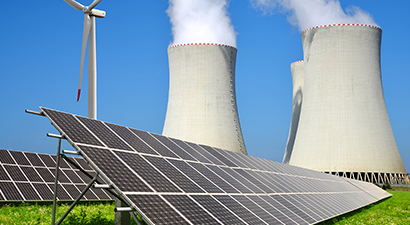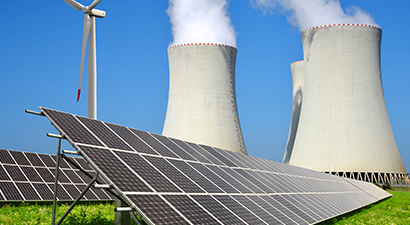Environmental Update, Proposed Changes to the Definition of Waste
On 13 October 2015, the Minister of Environmental Affairs published the National Environmental Management Laws Amendment Bill ("the NEMLA Bill") in Government Gazette 39287 for public comment.
The purpose of the Bill is to amend and clarify certain provisions and definitions, including those in the National Environmental Management: Waste Act 59 of 2008
The comment period for the Bill closes on 12 November 2015.
NOTE: The changes proposed by the NEMLA Bill will only become part of our law once the Bill has been signed and assented to by the President, making it an Act of Parliament, and thereafter, published in the Government Gazette.
NEMLA BILL 2015: KEY CHANGES TO
NATIONAL ENVIRONMENTAL MANAGEMENT: WASTE ACT 59 OF 2008 ("NEMWA")
Understandably, everyone gets hopeful when they hear that the definition of waste is being changed. But yet again, these changes are unlikely to resolve the current uncertainty in conclusively determining what exactly is waste, and the sense that some substances, materials and objects are being unnecessarily defined as waste, thereby frustrating the very objects of NEMWA, particularly in relation to re-use, recycling and recovery, and disposing of waste as a last resort.
The proposed changes to the main definition of "waste" are relatively minor. The amended definition will read as follows:
“waste” means-
(a) any substance, material or object, that is unwanted, rejected, abandoned, discarded or disposed of, or that is intended or required to be discarded or disposed of, by the holder of that substance, material or object, whether or not such substance, material or object can be re-used, recycled or recovered and includes all wastes from the sources of waste in Schedule 3 to this Act; or
(b) any other substance, material or object that is not included in Schedule 3 that may be defined as a waste by the Minister by notice in the Gazette,
<>but any waste or portion of waste, referred to in paragraphs (a) and (b), ceases to be a waste-
(i) once an application for its re-use, recycling or recovery has been approved and re-used, recycled or recovered in accordance with the conditions in the approval;
(ii) where approval is not required, once a waste is, or has been re-used, recycled or recovered; or
(iii) where the Minister has, in the prescribed manner, excluded any waste stream or a portion of a waste stream from the definition of waste.
The Bill proposes to move the definitions of waste types located in Schedule 3 back into Section 1 with no material changes to the current wording. These include the definitions for:
- "Building and demolition waste"
- "Business waste"
- "Domestic waste"
- "General waste"
- "Hazardous waste"
- "Inert waste"
The definitions of "reside deposit" and "residue stockpile" have also been moved into Section 1, and now refer to the definitions assigned to them in the Mineral and Petroleum Resources Development Act, 2002.
The definition of "primary processing" has been introduced and will have the meaning assigned to it in Section 1 of NEMA (which is also a new addition proposed by the Bill and will read as follows: "primary processing" includes any process of the mining, recovering, extracting, concentrating, crushing screening, stripping or washing of a mineral resource or petroleum resource").
The relevance of this addition is that it gives clarity to Section 43(1A) of NEMWA which establishes the Minister of Mineral Resources as the licensing authority "where the waste management activity is, or is directly related to – …..extraction and primary processing of a mineral or petroleum resource"
The Bill also proposes to amend the definition of "recovery" as follows:
“recovery” means the controlled extraction or retrieval of, energy or material from waste;
Lastly, Schedule 3 which is to be read with the Section 1 definition of waste is being completely overhauled. Instead of containing "Defined Wastes", it now lists 111 "Sources of Wastes" under the following 20 categories:
- Exploration, mining, quarrying, and physical and chemical treatment of minerals.
- Agriculture, horticulture, aquaculture, forestry, hunting and fishing, food preparation and processing.
- Wood processing and the production of panels and furniture, pulp, paper and cardboard.
- Leather, fur and textile industries.
- Petroleum refining, natural gas purification and pyrolytic treatment of coal.
- Inorganic chemical processes.
- Organic chemical processes.
- MFSU of coatings (paints, varnishes and vitreous enamels), adhesives, sealants and printing inks.
- Photographic industry.
- Thermal processes.
- Chemical surface treatment and coating of metals and other materials, non-ferrous hydrometallurgy.
- Shaping and physical and mechanical surface treatment of metals and plastics.
- Oil wastes and wastes of liquid fuels.
- Waste organic solvents, refrigerants and propellants.
- Waste packaging; absorbents, wiping cloths, filter materials and protective clothing not otherwise specified.
- Wastes not otherwise specified in the list.
- Construction and demolition waste (including excavated soil from contaminated sites).
- Human or animal health care and/or related research.
- Waste management facilities, waste water treatment plants and the preparation of water intended for human consumption and water for industrial use.
- General waste (including domestic waste, building and demolition waste, business waste and inert waste).





